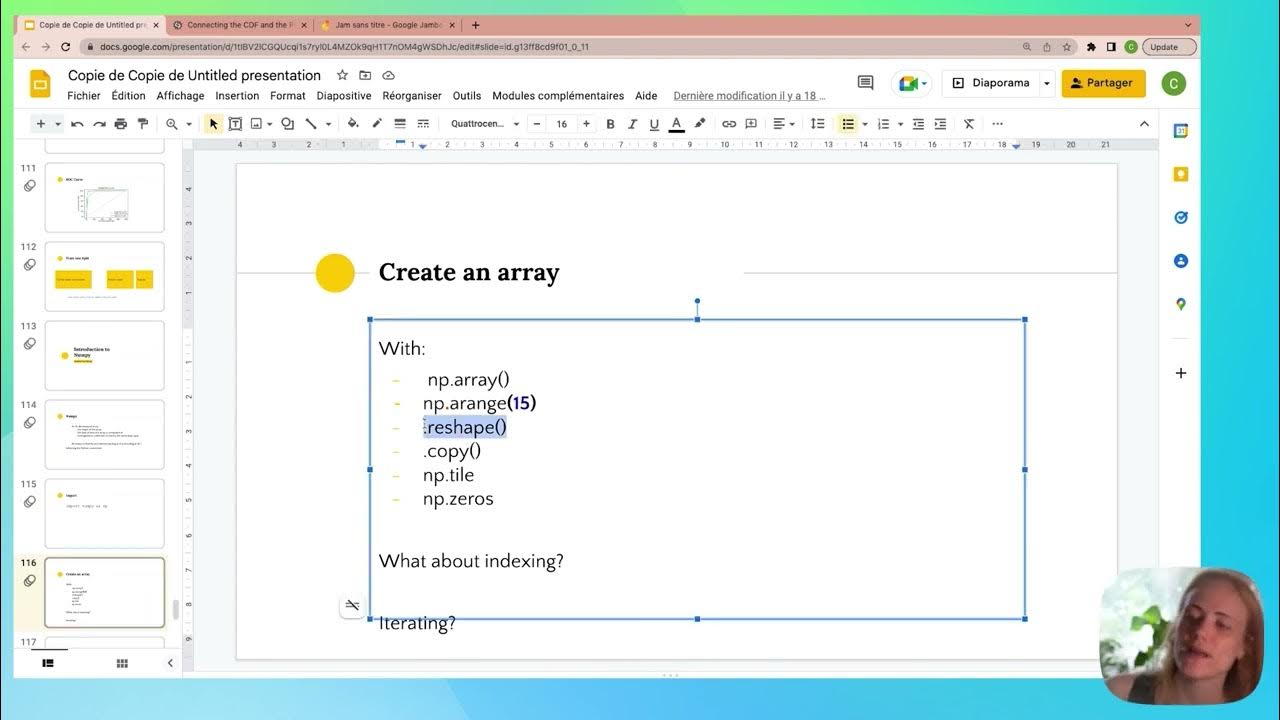Accessing Elements of a List in Python
Summary
TLDRThis educational presentation introduces the concepts of lists in Python, focusing on accessing individual elements. It covers single-dimensional lists, explaining how to access elements using their indices, including both positive and negative indexing. The presentation also delves into multi-dimensional lists, illustrating how they contain other lists and how to access their elements. Practical examples reinforce these concepts, culminating in a homework problem that encourages viewers to apply their knowledge. Overall, the session provides a clear and engaging overview of list manipulation in Python, essential for beginners.
Takeaways
- 😀 A single-dimensional list in Python is a linear collection where elements are stored one after the other.
- 😀 Each element in a single-dimensional list is accessed using a unique index, starting from 0.
- 😀 To create a list of multiples of 5 up to 20, you can use the syntax: `my_list = [5, 10, 15, 20]`.
- 😀 Accessing list elements can be done using their index, e.g., `my_list[0]` retrieves the first element (5).
- 😀 Negative indexing allows access to elements from the end of the list, where the last element has an index of -1.
- 😀 For example, to access the last element of a list using negative indexing, you would use `my_list[-1]`.
- 😀 A multi-dimensional list contains other lists as its elements, allowing for more complex data structures.
- 😀 To access elements in a multi-dimensional list, you can chain index calls, such as `my_list_2[0][0]` to get the value 1.
- 😀 Understanding the concept of negative indexing is beneficial when the length of the list is unknown.
- 😀 The lecture concludes with a homework problem asking participants to access a specific value from a provided list.
Q & A
What is a single-dimensional list in Python?
-A single-dimensional list is a list where elements are stored one after the other, allowing for indexed access to each element.
How do you create a single-dimensional list containing multiples of 5 up to 20?
-You can create the list using the syntax: `my_list = [5, 10, 15, 20]`.
What are the indices of the elements in the list [5, 10, 15, 20]?
-The indices are: 0 for 5, 1 for 10, 2 for 15, and 3 for 20.
How can you access the first element of a list in Python?
-You can access the first element by using its index, like this: `my_list[0]`.
What is negative indexing in Python lists?
-Negative indexing allows you to access elements from the end of a list, with -1 referring to the last element, -2 to the second last, and so on.
How do you access the last element of a list using negative indexing?
-To access the last element, you use the syntax: `my_list[-1]`.
What defines a multi-dimensional list in Python?
-A multi-dimensional list is a list that contains at least one other list as an element.
How do you access an element from a multi-dimensional list?
-You access an element by first specifying the index of the outer list, and then the index of the inner list. For example, `my_list_2[0][0]` accesses the first element of the first sub-list.
What is the visual representation of a multi-dimensional list?
-A multi-dimensional list can be represented as separate memory blocks for each element, where each block can contain another list, a string, or other data types.
What homework problem was presented at the end of the lecture?
-The homework problem asked how to access the value 'B' in the list `my_list_3`, with instructions to post answers in the comments section.
Outlines

This section is available to paid users only. Please upgrade to access this part.
Upgrade NowMindmap

This section is available to paid users only. Please upgrade to access this part.
Upgrade NowKeywords

This section is available to paid users only. Please upgrade to access this part.
Upgrade NowHighlights

This section is available to paid users only. Please upgrade to access this part.
Upgrade NowTranscripts

This section is available to paid users only. Please upgrade to access this part.
Upgrade Now5.0 / 5 (0 votes)





